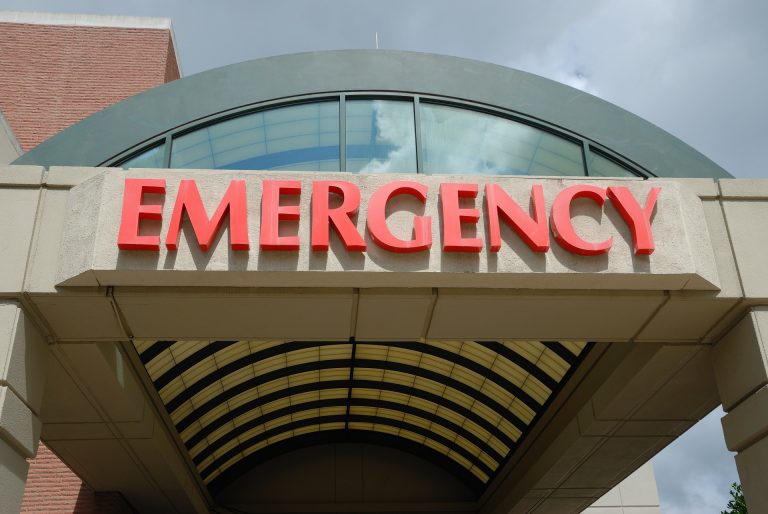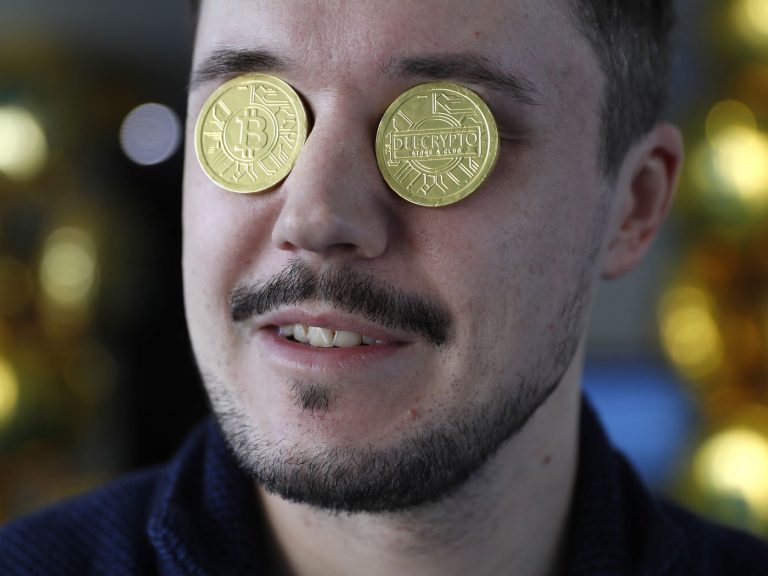Why does my dog have a lump under her jaw?
Anytime you see or feel swelling under your dog’s jaw, it is possible that the lymph nodes are enlarged. Your dog’s lymph nodes are an important part of her immune system. Many of her infection-fighting white cells and antibodies reside there.
How big is the lump on my Dog’s neck?
My dog has a lump on the side of her neck, behind the jaw, about the size of a quarter. It’s not totally solid but it is a little firm. Could this be … read more
How can you tell if a dog has a lump?
However, the good news is that about 60%-80% of lumps in dogs are non-malignant , meaning there is nothing to worry about. But the problem is, you cannot tell if a lump is serious just by looking at it or by touching it. It can only be diagnosed by a veterinarian after biopsy.
Why does my dog have a cyst in his mouth?
Salivary cysts are due to saliva leaking into the tissues surrounding the salivary glands, causing a large, firm swelling below the jaw of the dog. Transmission is not possible between animals and not possible between animals and people Salivary cysts can occur in any breed of dog at any age.
What is a fatty cyst on a dog?
Fatty cysts in dogs, also known as sebaceous cysts, develop on the surface of the dog’s skin. The fatty cysts form due to the accumulation of sebum , secreted by the sebaceous glands. Fatty cysts can be prevented with a suitable diet and a proper hygiene. Fatty cysts form when there is an excess of oils or sebum on the skin.
What are those bumps on your dog’s skin?
Lipomas on Dogs. The lipoma is another commonly encountered lump seen by veterinarians during a physical exam. These soft, rounded, non-painful masses that usually present just under the skin are generally benign.
What are fatty bumps on dogs?
Fatty tumors are the most common bumps on dogs skin. Fatty tumors are round, soft, non-cancerous growths that occur just under the skin of a dog in most cases even though they occasionally arise from connective tissues deeper in the skin (between muscles).
What causes bumps on dogs skin?
One of the commonly observed causes of skin bumps on dogs is their contact with allergens. Different kinds of allergens like dust, pollen, etc. are present in the environment, which can have an adverse effect on the dog’s skin resulting in bumps.
Why do I feel a hard lump on my Dog?
By signing up, you agree to our Terms of Service and Privacy Policy. Pet owners may pet or groom their dog to suddenly feel a hard lump on their dog that they have not felt before. This can cause concern, and in some cases, downright panic.
Can a tumor on a dog’s head be a wisdom bump?
A cancerous lump may have a different color of skin than the skin around it. It also may feel like you can’t tell where the edges of the lump end. The Honest Kitchen talks about feeling a hard knot on a dog’s head. If you feel a bump on a dog’s head between the ears, it could be what is called a “wisdom bump.”
What do you call a hard lump on a dog’s head?
It also may feel like you can’t tell where the edges of the lump end. The Honest Kitchen talks about feeling a hard knot on a dog’s head. If you feel a bump on a dog’s head between the ears, it could be what is called a “wisdom bump.” It is also called a “knowledge bump” or a “knowledge knot.”
Anytime you see or feel swelling under your dog’s jaw, it is possible that the lymph nodes are enlarged. Your dog’s lymph nodes are an important part of her immune system. Many of her infection-fighting white cells and antibodies reside there.
Where can you find a hard lump on a dog?
Skin lumps in dogs can grow on top of the head, neck, chest, body wall, axillae, legs, tail and just about anywhere else. Hard lumps that involve the mammary chain (breast) are one of the tumors of concern and should be evaluated immediately. Depth – Skin lumps can be on the skin (such as a mole or skin tag) or they can be under the skin.
A cancerous lump may have a different color of skin than the skin around it. It also may feel like you can’t tell where the edges of the lump end. The Honest Kitchen talks about feeling a hard knot on a dog’s head. If you feel a bump on a dog’s head between the ears, it could be what is called a “wisdom bump.”
What does it mean when your dog has enlarged lymph nodes?
Your dog’s lymph nodes are an important part of her immune system. Many of her infection-fighting white cells and antibodies reside there. Enlarged lymph nodes can be a sign of infection, but they can also be a sign of lymphoma, a type of cancer of immune tissue.
When to check for bumps around dogs eyes?
Checking for bumps around dogs eyes is important because some cancers go unnoticed for a long time. Here’s how to check gently and thoroughly. If you’ve found a lump or bump around your dog’s eyes or ears, and it’s been there for one month or more or is 1cm in diameter, make sure you check it out with your veterinarian.
Why does my Doberman have swelling in his jaw?
Certain dogs, including boxers, Labrador retrievers, Great Danes, Doberman pinschers, and some terriers, may develop a rare condition called craniomandibular osteopathy. This causes swelling of the jaw, and is usually seen in dogs aged 3 to 10 months. Other signs of the disease include drooling, fever, and reluctance to eat.
What kind of lump is on my Dog?
Abscesses: These are lumps that form as a result of an infection from a bite, wound or foreign object. They are often painful and can contain large amounts of blood and pus with the possibility of rupturing. Apocrine Cysts: These cysts are caused by obstructed skin glands.
Salivary cysts are due to saliva leaking into the tissues surrounding the salivary glands, causing a large, firm swelling below the jaw of the dog. Transmission is not possible between animals and not possible between animals and people Salivary cysts can occur in any breed of dog at any age.
Abscesses: These are lumps that form as a result of an infection from a bite, wound or foreign object. They are often painful and can contain large amounts of blood and pus with the possibility of rupturing. Apocrine Cysts: These cysts are caused by obstructed skin glands.
Where are the cysts on a dog’s neck?
In an affected animal, pet parents will notice the salivary cysts in either of two places. Typically, a large pocket of saliva will form under the jaw at the base of the neck. It will initially be on the same side as the injured duct, but after a brief period, the cyst can become so large that it fills the entire area below the jaw.
When to know if your dog has a lump?
Lumps and Bumps on Pets: Is it Serious? 1 Fast-growing bumps: If you notice a growth on your pet that is getting bigger over a month… 2 Painful lumps: If the lump itself is painful when you touch it or is in a painful area when… 3 Discharge from the lump or discoloration of the skin: These lumps need to be evaluated quickly;
Why does my dog’s jaw tremble when I Pet it?
1 Dental issue. This is the most common medical reason for jaw quivering. 2 Poison. This is most likely NOT the case, but poison can cause your dog to tremble. 3 Seizure. It’s very common for dogs to suffer from seizures. 4 Shaker Syndrome. 5 Side Effect to Medication. 6 Idiopathic. …
Why does my Boston Terrier have a lump in his mouth?
These lumps can occur in any breed of dog, but some breeds are at higher risk. These include the Labradors, schnauzers, Boston Terriers, beagles, and boxers. Warts are tumors of the mouth, also known as oral warts or canine oral papillomas. Unlike other lumps, these are caused by viral infections (the papilloma virus).
Why are there lumps and bumps on my Dog?
Several lumps/bumps that increase in size within a few minutes: This may be an allergic reaction, and you should seek immediate veterinary care. There are many causes for lumps and bumps on your pet. Some common causes include fat, tumors ( benign and malignant Very virulent or infectious.
1 Dental issue. This is the most common medical reason for jaw quivering. 2 Poison. This is most likely NOT the case, but poison can cause your dog to tremble. 3 Seizure. It’s very common for dogs to suffer from seizures. 4 Shaker Syndrome. 5 Side Effect to Medication. 6 Idiopathic.
Is it normal for a lump to appear on a dog?
And so on. A lump appearing overnight on your dog can be overwhelming indeed, but definitely not uncommon. Many dog owners over the world have faced this at least once in a lifetime with their canines. Lumps can appear anywhere – legs, body, neck, and just about anywhere.
Why does my dog have bumps on her skin?
Lumps and bumps on a dog’s skin can have many underlying causes, which owners often divide into two categories: cancer and everything else. Non-cancerous lumps While generally less worrisome to owners, non-cancerous lumps can still create discomfort for dogs.
These lumps can occur in any breed of dog, but some breeds are at higher risk. These include the Labradors, schnauzers, Boston Terriers, beagles, and boxers. Warts are tumors of the mouth, also known as oral warts or canine oral papillomas. Unlike other lumps, these are caused by viral infections (the papilloma virus).
And so on. A lump appearing overnight on your dog can be overwhelming indeed, but definitely not uncommon. Many dog owners over the world have faced this at least once in a lifetime with their canines. Lumps can appear anywhere – legs, body, neck, and just about anywhere.
What to do if your dog has a growth in his mouth?
If the growth is problematic, your vet will usually recommend that it be surgically removed. Viral papillomas are contagious between dogs, and can be passed from dog to dog by means of direct contact.
What kind of lump is under my dog’s skin?
Lipomas are the commonest kind of lumps and are basically just fatty growths under your dog’s skin. They do not attach to the skin and can hence be moved over the body of the dog with slight hand pressure. This kind is benign, but grows bigger in size, sometimes affecting mobility and posture of the pet.
Does a lump mean a dog has cancer?
A lump under a dog’s skin doesn’t mean a dog has cancer and you shouldn’t be alarmed if you find your pet has developed one. However, lumps under the skin aren’t always benign, so it’s important to regularly check your dog, and if you find a lump have it tested.
Is it normal for dog to have lumps?
Lumps and bumps on dogs are so common that they’re one of the top reasons pet owners take their animals to their veterinarians. It’s not pretty, but it’s a fact of life: We all get older. For some of our pets, that means often unsightly, suspicious and definitely disconcerting growths that arise on, in or just beneath the skin.
What causes swelling of dogs throat under the jaw area?
One of the most common reason is your dog has a viral or bacterial infection and, as they try to fight this off, the lymph nodes can swell. A common cause of swelling or enlargement of the Submandibular lymph nodes, those just underneath the jaw, is Strep Throat , which is also a common condition in humans too.
What are the causes of a lump underneath the jaw?
Lump on Jaw Line, Hard, Movable, Painful Near Ear, Small or Large Bump Salivary glands problems. One of the possible causes of a lump on the jawline is inflamed, swollen or infected salivary glands. Swollen lymph node. The second and a more likely cause of bump on jaw line is swollen lymph nodes. Cysts. Lump on jawline after tooth extraction. Juvederm injections. Abscessed tooth. Lump on jaw line cancer. Facelift surgery.
Sialocele (Salivary Mucocele) in Dogs. Dogs and cats have four salivary glands, and all can become affected by cysts. These salivary gland cysts are known as sialocele (or a salivary mucocele). It is the most common salivary disorder in dogs and is noticed by swelling under their neck or jaw.










